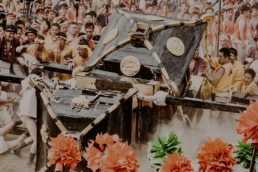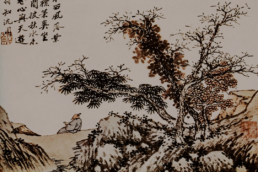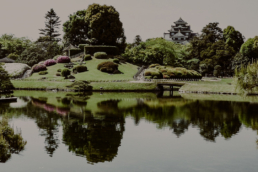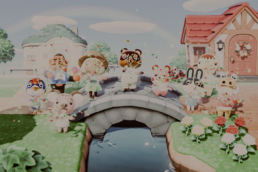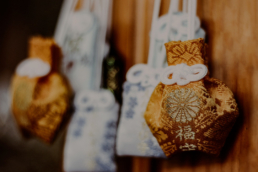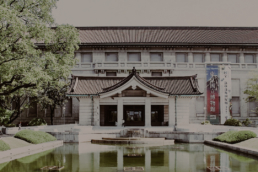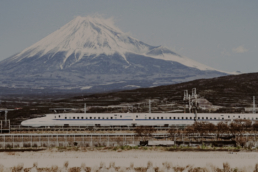Artisti giapponesi contemporanei all'estero
Il Giappone come l’Italia è un paese molto legato all’arte e tanti artisti contemporanei giapponesi hanno esportato i loro lavori all’estero.
Gli artisti contemporanei giapponesi all’estero
Autore: Sara
Biennali, fiere dell'arte ed expo hanno permesso al mondo dell'arte contemporanea giapponese di volgere uno sguardo verso l'esterno. Finalmente, anche i grandi artisti escono al di fuori dei confini del Sol Levante. Noi di Japan Italy Bridge abbiamo deciso di presentarvi alcuni tra i più importanti artisti contemporanei che hanno ricevuto consensi in tutto il mondo. Parliamo di creativi come Yayoi Kusama, Tatsuo Miyajima, Takashi Murakami, Yoshitomo Nara e Hiroshi Sugimoto. Siete pronti per questo viaggio?
Yayoi Kusama

photo credits: wsj.com
Nata a Nagano nel 1929, Yayoi Kusama è forse la più conosciuta fra gli artisti contemporanei giapponesi. Cominciò a dare prova delle sue immense doti artistiche a 10 anni. Il difficile rapporto con la madre ed un trauma che la segnò profondamente condussero Kusama a dipingere sulle tele le sue esperienze. L'ambiente fisico e la sua personalità svanivano inghiotte dallo spazio che si muoveva ad una incredibile velocità. Iniziò ad ispirarsi anche a Georgia O'Keeffe e le scrisse una lettera. L'artista rispose e Kusama si trasferì a New York dove iniziò a realizzare dipinti monocromatici che attirarono immediatamente l'attenzione.
I primi anni '60 non erano di certo facili per una donna, soprattutto giapponese e riuscire ad esporre nelle gallerie era un'impresa difficile. Tuttavia, ci riuscì diventando via via sempre più conosciuta nel campo dell'arte concettuale. Le sue opere includono attributi di femminismo, minimalismo, surrealismo, art brut, pop art ed espressionismo astratto accomunati tutti dalla tecnica dei pois.
Tornata in Giappone, l'artista potè godere del successo meritato. Le sue opere furono esposte al Museum of Modern Art di New York, al Tate Modern a Londra e al National Museum of Modern Art di Tokyo. Tra il 1994 e il 2012, Kusama collaborò con il musicista Peter Gabriel e soprattutto con Marc Jacobs, direttore artistico di Louis Vuitton. Kusama oggi vive nell'ospedale psichiatrico Seiwa, in Giappone, per scelta personale e continua a dipingere quotidianamente nel suo studio a Shinjuku.
Tatsuo Miyajima

photo credits: smh.com.au
Nato a Tokyo nel 1957, Tatsuo Miyajima si è laureato al corso di pittura a olio presso il dipartimento di Belle Arti della Tokyo National University of Fine Arts and Music. Iniziò a sperimentare con la performance art prima di passare alle installazioni basate sulla luce.
Miyajima affermò che il desiderio di creare un lavoro più duraturo, in contrasto con la natura necessariamente effimera della sua performance e delle sue azioni, lo ha motivato a iniziare a lavorare su sculture e installazioni. Impiegando materiali contemporanei come circuiti elettrici, video e computer, i lavori estremamente tecnologici di Miyajima si sono incentrati sull’utilizzo di contatori a diodi digitali ad emissione di luce (LED). Questi numeri, lampeggianti in cicli continui e ripetitivi da 1 a 9, rappresentano il viaggio dalla vita alla morte, la cui finalità è simbolizzata dallo "0", numero che non compare mai nella sua opera.
Miyajima ha tenuto mostre personali presso l'Ullens Center for Contemporary Art di Pechino, al Miyanomori Art Museum di Hokkaido, al San Francisco Museum of Modern Art. Inoltre, ha partecipato alla Biennale di Venezia e a numerose mostre collettive, dal Museum of Contemporary Art di Sydney, all'Hiroshima City Museum of Contemporary Art. Dal 2006 Miyajima ricopre il ruolo di vicepresidente della Tohoku University of Art and Design.
Takashi Murakami
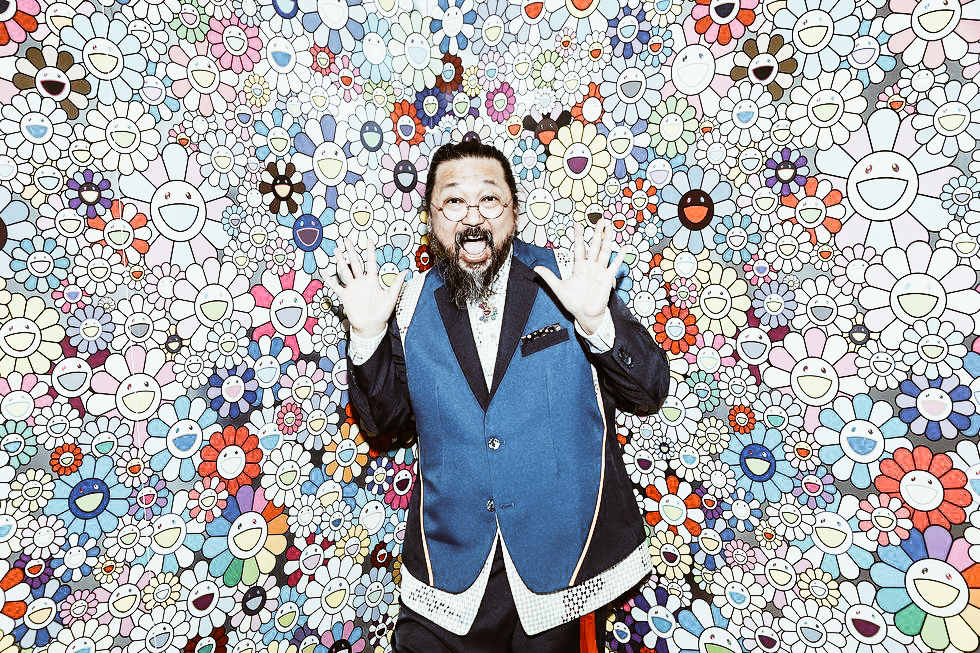
photo credits: crfashionbook.com
Nato a Tokyo nel 1962, Takashi Murakami ha intrapreso gli studi di pittura giapponese tradizionale presso il Tokyo Geijutsu Daigaku. Tuttavia, la sua aspirazione era quella di diventare un grande mangaka. Dopo aver conseguito la laurea in pittura tradizionale Nihon-ga, vinse una borsa di studio del MoMA PS1. Si trasferì a New York arricchendo le sue influenze con le opere di Andy Warhol e ispirandosi alle filosofie produttive di aziende cinematografiche come Disney, LucasFilm e lo Studio Ghibli di Hayao Miyazaki.
Tra le svariate mostre personali, ce n’è una che segnerà la nascita di un nuovo movimento artistico giapponese: “Superflat”. Questo era il titolo della mostra al MOCA di Los Angeles che diventò il manifesto programmatico ed estetico dell'artista promuovendo sistematicamente il valore di un'arte giapponese autonoma dalle influenze occidentali. Un’arte appunto capace di esprimere la realtà culturale del nuovo Giappone. Superflat infatti mescola elementi otaku ad elementi Kabuki e jōruri, fusi e appiattiti in immagini dalle superfici levigate e dai colori brillanti in cui i temi estetici sono amplificati ed esaltati.
Murakami ha collaborato con Marc Jacobs e ha realizzato per Louis Vuitton la borsa in edizione limitata Cherry Blossom, disegnando per l'occasione un pattern kawaii con il monogramma dell'azienda di moda.
Grazie al suo approccio estetico e imprenditoriale all’arte, Murakami è entrato a pieno titolo nello scenario artistico elitario internazionale, vendendo attraverso aziende terze, oggetti destinati al mercato di massa, inventando e promuovendo i brand Kaikai Kiki e GEISAI.
Yoshitomo Nara

photo credits: scmp.com
Nato a Hirosaki nel 1959, Yoshitomo Nara ha studiato presso l'Università Prefetturale di Belle Arti e Musica di Aichi e alla Kunstakademie di Düsseldorf.
Nara è conosciuto per i suoi dipinti i cui soggetti sono ingannevolmente semplici. Troviamo infatti bambini e animali a colori pastello con tratti fumettistici con poco o nessun sfondo che appaiono contemporaneamente dolci e sinistri. Inoltre a volte brandiscono armi come coltelli e seghe ed i loro sguardi sono accusatori. La sua arte è una metafora che accusa le persone di attaccare l'innocenza dell'infanzia.
Le perversioni oggettistiche di Nara affondano le radici nella cultura popolare giapponese, influenze che però si mescolano a quelle provenienti dalla società orientale ed occidentale. La sua arte pittorica, scultorea, delle installazioni e delle incisioni esplora i temi dell'isolamento, della ribellione, della spiritualità e della religione.
Hiroshi Sugimoto
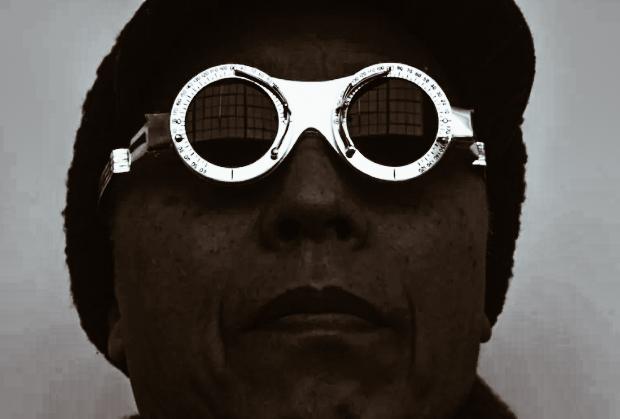
photo credits: artslife.com
Nato nel 1948 a Tokyo, Hiroshi Sugimoto dopo aver conseguito il Bachelor of Arts, si trasferisce a Los Angeles per studiare fotografia. Questi studi lo porteranno, negli anni 70 ad affermarsi come uno dei più famosi fotografi contemporanei.
I suoi lavori trattano della storia e dell’esistenza temporale, investigando su temi quali il tempo, l’empirismo e la metafisica. Sugimoto ha ricevuto numerosi grant e le sue opere sono esposte nelle collezioni della Tate Gallery, del Museum of Contemporary Art, Chicago, del Metropolitan Museum di New York e del Guggenheim di New York.
Come molti degli artisti contemporanei, anche Sugimoto ha collaborato con la moda, questa volta con la casa francese Hermès. Le foto a colori di Sugimoto per i foulards di Hermes sono state esposte nel giugno 2012 al Museo delle culture di Basilea. Durante la Biennale di Venezia del 2014, Sugimoto ha svelato la sua “Glass Tea House Mondiran” presso Le Stanze del Vetro sull’isola di San Giorgio Maggiore.
Il mondo dell’arte è ricco di sfaccettature date da ispirazioni continue, dalla ricerca dell’io, dalla necessità di esprimere concetti profondi senza l’utilizzo di parole. Quali tra gli artisti contemporanei giapponesi vi hanno più colpito? Fatecelo sapere nei commenti!
Nada no Kenka Matsuri
Dal 14 al 15 ottobre di ogni anno, nel Santuario Matubata Hachiman (松原八幡神社) nella città di Shirahama a Himeji, prefettura di Hyogo, si tiene il Nada no Kenka Matsuri (灘のけんか祭り) uno dei più grandi festival autunnali del Giappone.
Nada no Kenka Matsuri, Combattere per le benedizioni
Autore: Sara
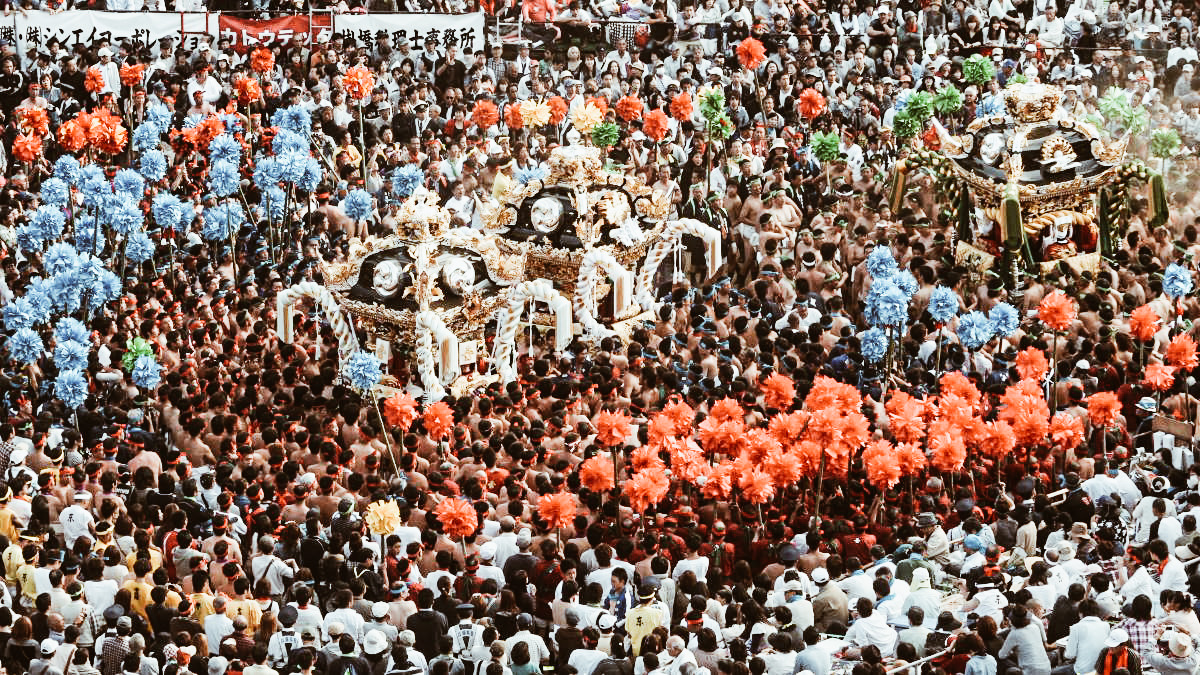
photo credits: armidaleexpress.com.au
Il termine “kenka”(けんか) contenuto nel nome del Festival significa “lottare” “combattere”, per questo motivo, nella lingua corrente, è definito come “il Festival della lotta” in cui i Kami (gli dei) benediranno il vincitore dello scontro con un buon raccolto. Vista l’irruenza con cui si svolge, all’evento secondo la tradizione scintoista possono partecipare solamente i ragazzi delle scuole superiori e gli uomini fino ai 45 anni. Inoltre i partecipanti devono appartenere a 7 specifici villaggi: Higashiyama (東山), Kiba (木場), Matsubara (松原), Yaka (八家), Mega (妻鹿), Usazaki (宇佐崎), Nakamura (中村).
14 Ottobre: La Vigilia “Yoi-Miya” (宵宮)

photo credits: armidaleexpress.com.au
Alle 11:00 del mattino tutto è pronto per la parata “Neri-dashi” (練りだし). I 7 Yatai (piccoli carri allegorici sacri) provenienti dai 7 villaggi si recano al Santuario Matubata Hachiman per ricevere la benedizione divina, “Miya-Iri” (宮入). Qui gli Yatai si cimentano nella prima competizione chiamata “Neri-Awase” (練り合わせ) entrando in competizione l’uno contro l’altro. Una sorta di “preparazione” poiché la vera “lotta” si terrà il giorno successivo e sarà ancora più difficile. A questo punto ha luogo il “Shishimai”: una danza del drago di fronte alla scuola elementare di Shirahama.
15 Ottobre: Hon-Miya il pesante scontro degli Yatai

photo credits: diversity-finder.net
L’evento principale del Festival inizia alle 5:00 del mattino. Il leone del villaggio di Matsubara (松原の獅子) celebra la danza del drago al Santuario per adorare gli dei. In seguito, la cerimonia si sposta sull’oceano dove i partecipanti dei villaggi eliminano le proprie impurità dello spirito bagnandosi con l’acqua fredda (Osogi 禊) . A questo punto si da il via alla Miya-Iri (cerimonia di apertura) al santuario Matubata Hachiman con la benedizione degli dei. Finalmente inizia il pensante scontro: i primi sono i 3 Mikoshi (i santuari portatili meno costosi degli Yatai) del villaggio incaricato di ospitare il festival (ogni anno il luogo cambia alternandosi tra i 7 villaggi).
Il primo Mikoshi (一の丸) è molto pesante ed è portato dagli uomini di età superiore ai 36 anni. Il secondo (二の丸) è un po’ più leggero ed è portato da uomini di età compresa tra i 26 e i 35 anni. Il terzo Mikoshi (三の丸) è molto leggero ed è portato dai ragazzi di età inferiore ai 25 anni.
Essi combattono tra loro due volte (神輿合わせ, mikoshi-awase): dapprima davanti all’edificio principale del Santuario, poi nel campo di battaglia ai piedi del monte O-Tabi-Yama (御旅山). Al termine di questo scontro, è il turno degli Yatai sul campo di battaglia (Neri-awase 練り合わせ).
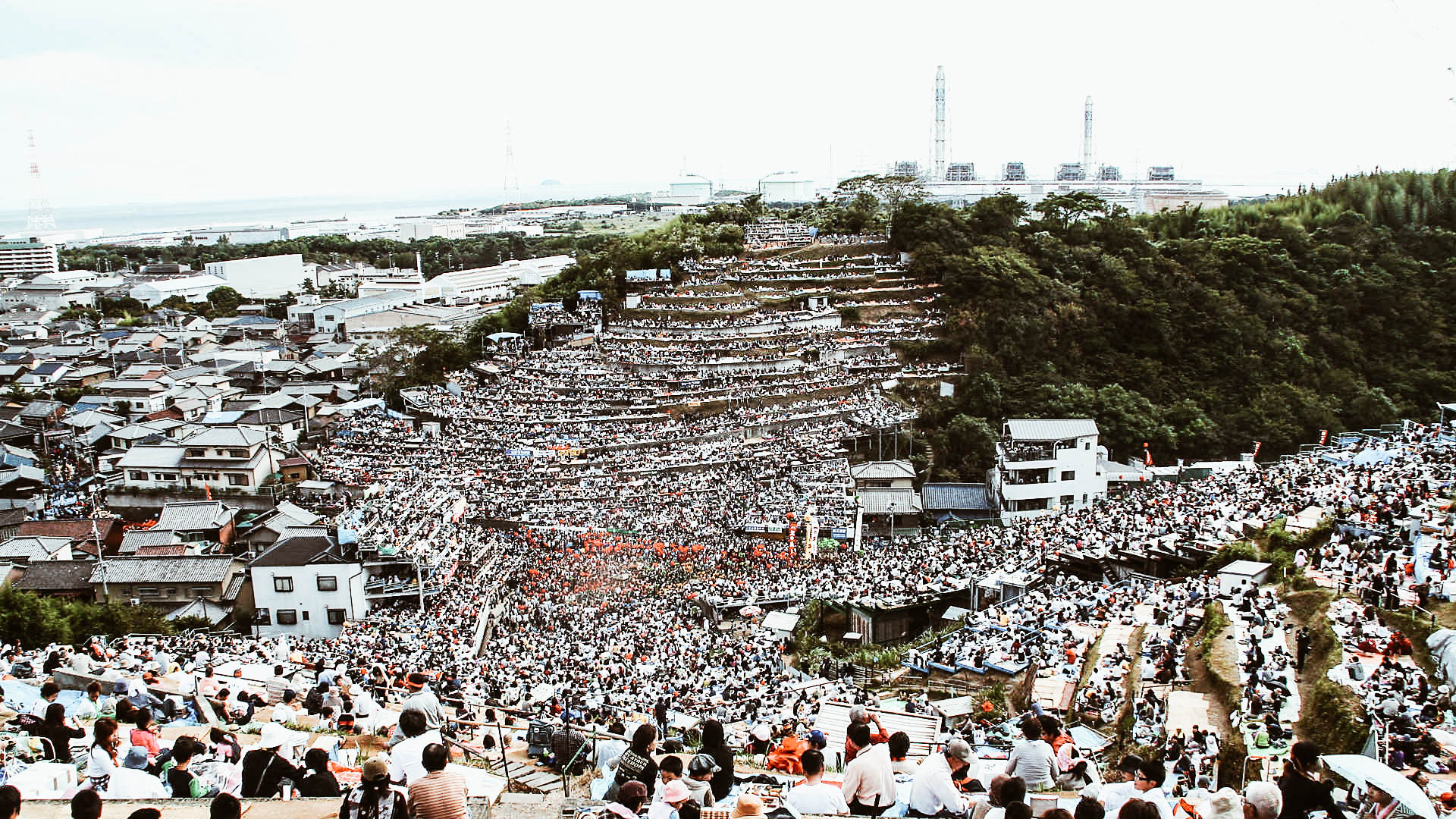
photo credits: kabegami.image.coocan.jp
Le grida concitate degli spettatori e dei partecipanti rendono l’evento particolarmente vivo e ricco di passione. A battaglia conclusa, i 3 Mikoshi e i 7 Yatai vengono portati in cima alla montagna dove sono pronunciate le preghiere. il Nada no Kenka Matsuri si conclude con la discesa dal monte che avverrà con lo stesso ordine in cui i villaggi sono saliti.
Introduzione alla poesia giapponese
Italia, Francia, Inghilterra, America e molti altri Paesi al mondo offrono una vastissima produzione poetica, ma com'è la poesia giapponese? Eccoci ad intraprendere questo affascinante viaggio letterario per scoprire qualcosa di più sulla Terra del Sol Levante!
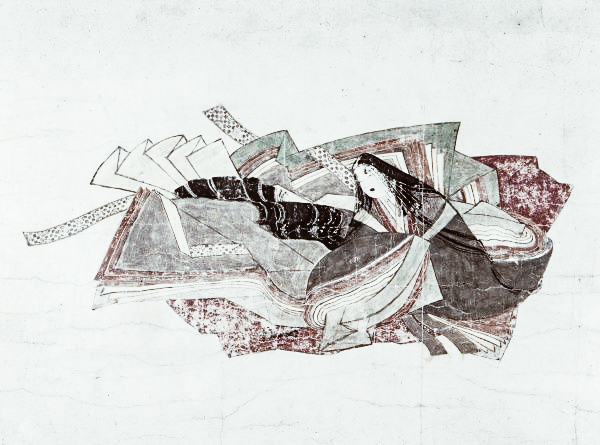
photo credits: grangerprints.printstoreonline.com
Introduzione alla poesia giapponese
Autore: Sara | Ispirazione: Tokyo Weekender
Poesia giapponese: Kanishi

photo credits: wikimedia.org
Curiosamente, la maggior parte delle opere letterarie della poesia giapponese nacquero durante la Dinastia Tang, dall’incontro dei poeti giapponesi con quelli cinesi. E così, sotto l’influenza cinese, Kanshi 漢詩 divenne la forma di poesia più popolare durante il primo periodo Heian tra gli aristocratici giapponesi e raggiunse sempre più popolarità affermandosi anche nel periodo moderno, soprattutto tra accademici e intellettuali. I temi erano liberi, mentre le forme erano più rigide: quelle classiche contavano circa 5 o 7 sillabe in 4 o 8 linee, seguendo le regole di Lushi 律詩 (rima sulle linee pari con un tono regolato) e jueju 絕句 (rima in versi pari e composta solo da quartine) basandosi soprattutto sul tono del cinese mandarino.
Gli esponenti maggiori di questo stile sono sicuramente Kukai, Sugawara no Michizane, Maresuke Nogi e Natsume Soseki.
Waka
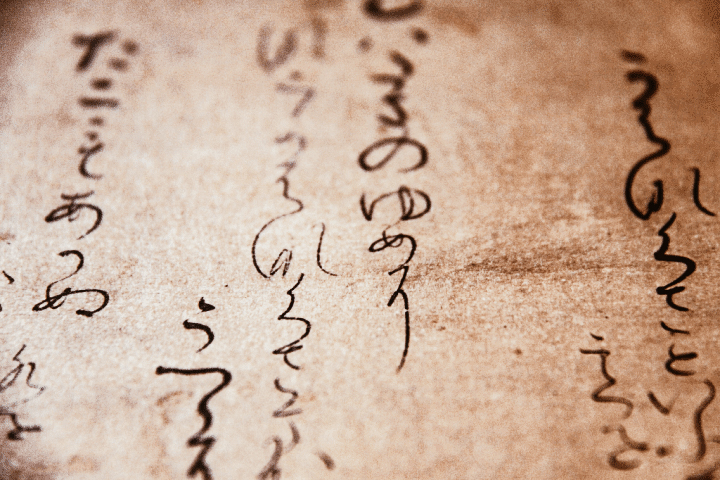
photo credits: https://matcha-jp.com/jp/289
A differenza di Kanshi, Waka 和歌 era la poesia classica scritta in giapponese con due forme ben precise: Choka, 長歌, ovvero lunghi poemi privi di alcuna restrizione di lunghezza. La struttura è semplice e consta di 2 linee di 5 o 7 suoni sillabici (che ne determinano l’accento) che si conclude con 3 linee da 5, 7 e ancora 7 suoni sillabici; Tanka, 短歌, invece possiede una struttura simile, ma sono poemi più brevi, spesso costituiti solo da cinque gruppi di parole rispettivamente di 5, 7, 5, 7 e, infine, 7 suoni sillabici. Waka non segue le regole di rima ed è ancora molto popolare nel Giappone moderno, anche se ora si predilige la forma Tanka: la brevità più incisiva rispecchia come sempre l’essenzialità di una cultura profonda. Poeta per eccellenza è sicuramente Machi Tawara.
Haiku
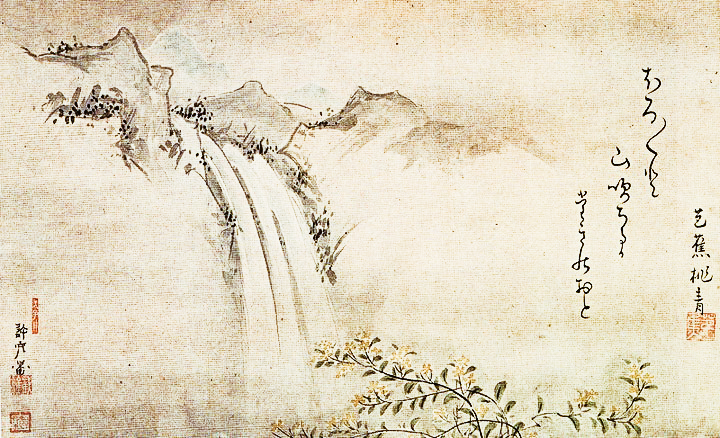
photo credits: wikimedia.org
Qual è il componimento poetico Giapponese che consideriamo tra i più famosi? Senza ombra di dubbio è l’Haiku, 俳句. Amato da tutti, esso è solitamente composto da 3 versi e 17 suoni sillabici totali, schematicamente 5/7/5. L’Haiku conobbe il proprio sviluppo nel periodo Edo quando numerosi poeti si affidarono a questo genere per descrivere la natura e gli accadimenti umani direttamente collegati ad essa. Infatti, questi piccoli “componimenti dell’anima” esprimono la bellezza di ogni singolo momento, rappresentando “l’attimo” e conferendo al lettore quel senso di “illuminazione” grazie alle immagini che le parole evocano. I poeti più famosi ed amati sono senza dubbio Basho, Yosa Buson, Kobayashi Issa, e Masaoka Shiki.
Il nostro viaggio nella poetica giapponese si conclude qui per ora, questa è brevissima panoramica che ci ha permesso di entrare nel mondo della letteratura del nostro tanto amato Giappone. Qual è la vostra forma preferita di poesia tra quelle sopra esposte? La mia è facile da indovinare: amo particolarmente gli Haiku. Eccone di seguito uno tra i miei preferiti di Matsuo Basho:
Prendiamo
il sentiero paludoso
per arrivare alle nuvole.
Continuate a seguirci per scoprire altre piccole perle di questo mondo orientale e mi raccomando, continuate a percorrere il sentiero intrapreso: la felicità è sempre davanti a voi!
Parole intraducibili: Mono No Aware, Shakkei, Hikikomori, Omotenashi, Betsubara
A tutti è capitato almeno una volta di navigare in internet e trovare articoli riguardanti le “parole intraducibili”. Infatti, spesso scopriamo che ogni Nazione possiede delle parole speciali con un determinato significato privo di una qualsivoglia corrispondenza nella propria lingua. Oggi anche noi di Japan Italy Bridge vogliamo provare a riassumere quelle parole particolari, uniche e talvolta magiche che racchiudono dentro si sé un intero mondo.
Parole intraducibili: Mono No Aware, Shakkei, Hikikomori, Omotenashi, Betsubara
Autore: Sara
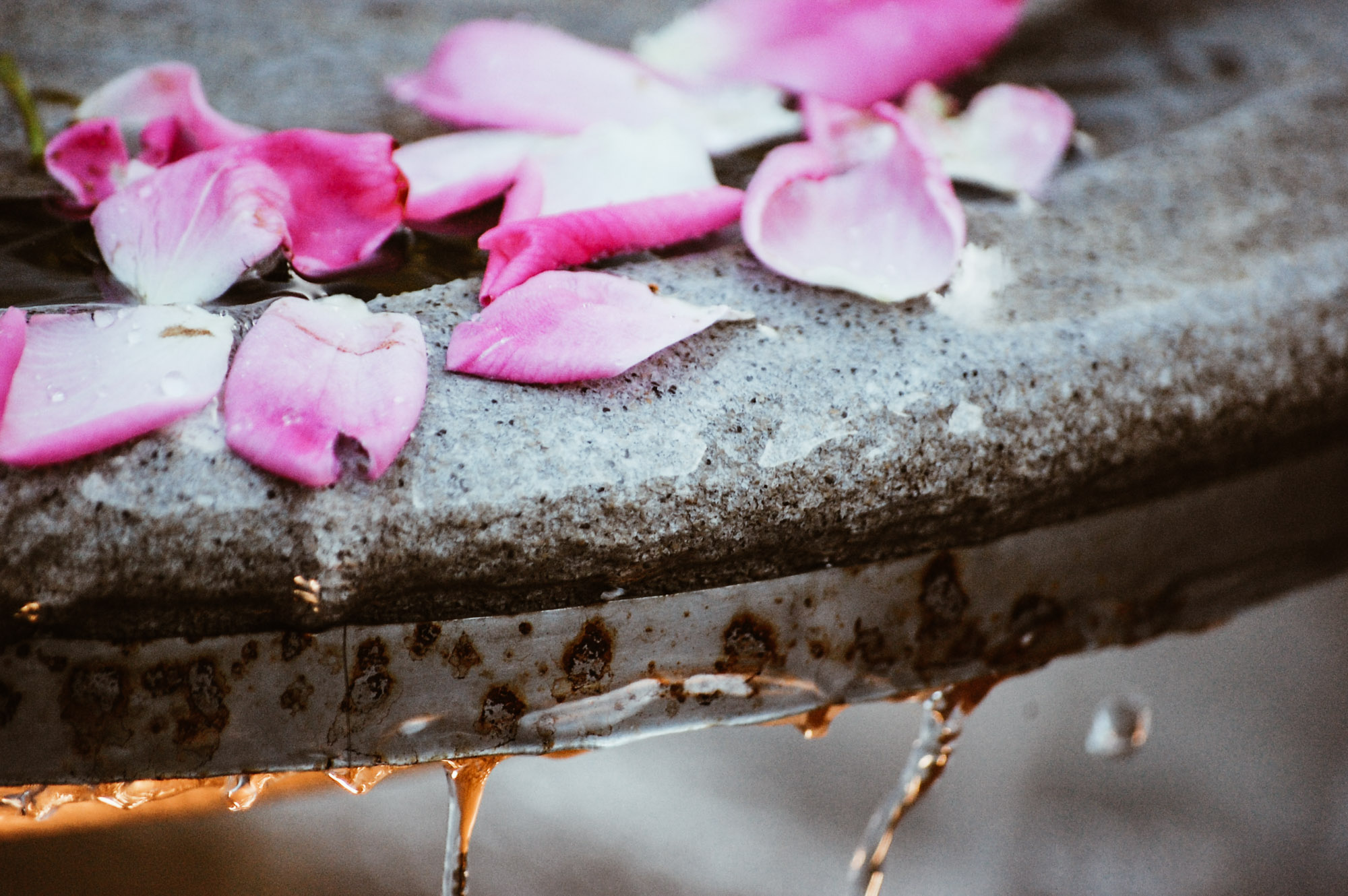
photo credits: Unsplash
Parole intraducibili: Mono No Aware
La prima della lista delle nostre parole intraducibili è, 物の哀れ, “mono no aware”. Un concetto estetico che esprime una forte partecipazione emotiva alla bellezza della natura e della vita umana con un conseguente sentimento nostalgico legato al suo incessante cambiamento. Quindi letteralmente lo potremmo tradurre come “il pathos delle cose” o “la bellezza dell’effimero”.
Mono no Aware trova le sue radici nel periodo Heian, ma si è diffuso solamente nel periodo Edo, quando lo studioso Motoori Norinaga fece un’attenta analisi e critica dell’opera “The Tale of Genji” di Murasaki Shikibu definendolo come un perfetto esempio di “mono no aware”, ovvero la perfetta essenza della cultura giapponese. Da questo momento in poi, il percorso creativo di moltissimi artisti giapponesi ha avuto come perno proprio questo strano e complesso concetto. Troviamo infatti estremamente sentimentale la “caducità” delle cose a prendere il sopravvento, sia nelle opere letterarie così come in quelle cinematografiche. Questo lascia quella sensazione di “mancanza” per un finale che non appaga nè il lettore nè lo spettatore. Una dolce tristezza e consapevolezza che tutto è destinato a morire lentamente (e per questo va amato profondamente).
Shakkei
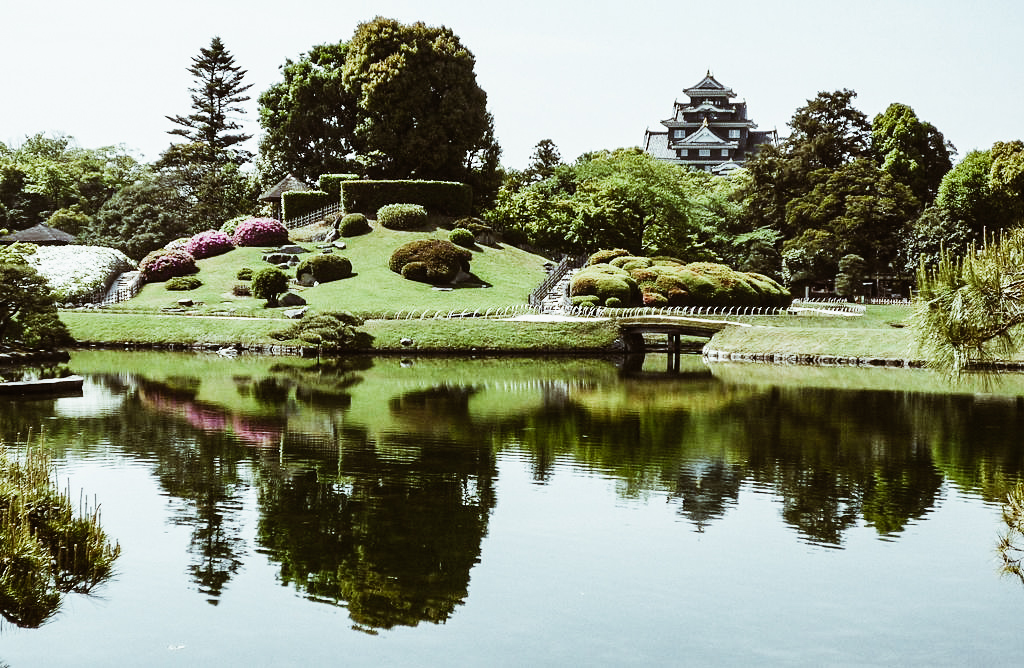
photo credits: wikipedia.org
La seconda espressione che vogliamo analizzare è 借景, “shakkei”. Questa volta si tratta di una particolare tecnica definita letteralmente come “paesaggio in prestito”, ovvero incorporare elementi esterni del paesaggio all'interno della composizione di un giardino, la perfetta fusione degli elementi a disposizione già presenti con l’estetica circostante.
Potremmo dire che l’intero Giappone si rifà al concetto di “Shakkei”. Tutto pare essere esattamente al posto giusto in modo armonico e non sfacciatamente calcolato e studiato. Una sorta di esaltazione della natura, come se persino i grattacieli fossero parte integrante e perfetta dell’intero paesaggio. In realtà però questa espressione si riferisce prettamente ai giardini dell’Asia Orientale che conferisce loro il fascino che conosciamo bene. I principi del “paesaggio in prestito” affondano le radici nello Sakuteiteki (antico trattato di giardinaggio giapponese) sviluppandosi sempre di più fino a raggiungere la massima popolarità durante i periodi Meiji e Taisho.
Hikikomori

photo credits: emefka.sk
La terza parola è forse tra le più note e più ”pericolose”, si tratta di 引き籠もり, Hikikomori. Oggi è un triste fenomeno sociale che può avere conseguenze estreme e che va oltre al semplice “isolamento”. Ci sono persone che decidono di ritirarsi volontariamente dalla vita sociale, cercando livelli di solitudine estremi assumendo uno stile di vita deleterio a livello sia fisico che psicologico. La notte ed il giorno si invertono, I rapporti diretti spesso vengono sostituiti da quelli virtuali o, nei casi ancora più estremi, non esistono nemmeno. L’hikikomori si aggira per la propria stanza, privo di qualunque stimolo e questo, come è intuibile, sono caratteristiche che contraddistinguono i soggetti depressi con atteggiamenti ossessivo-compulsivi.
Il primo a dare un nome a questo particolare fenomeno fu il psichiatra Tamaki Saitō quando osservò che il numero di coloro che presentavano questa profonda letargia nei confronti della vita aumentava e le caratteristiche erano sempre le stesse. Possiamo quindi definire Hikikomori come una sindrome più che come una parola in sé.
Parole intraducibili: Omotenashi

photo credits: livingnomads.com
La quarta della lista è お持て成し, “omotenashi”. E’ davvero difficile trovare un equivalente che possa dare anche solo l’idea di questo meraviglioso concetto. Potremmo usare la parola “ospitalità”, ma è quasi riduttivo poichè essa esprime uno degli aspetti della cultura giapponese tra i più complessi e profondi. Omotenashi è la volontà di essere attento e prendersi cura degli altri. Significa anche dare importanza ai dettagli, avere la consapevolezza delle proprie azioni, possedere la sensibilitàe per ricercare l’armonia e far stare bene gli altri. Fu il monaco buddista Sen no Rikyū a stabilire i principi e le buone regole di condotta durante una delle più note cerimonie: quella del té, espressione di massima cura dell’ospite.
Omotenashi è quindi il Giappone, la base su cui è radicata l’etichetta comportamentale dell’intero Paese, anche se non è detto che questo senso di “ospitalità” si incontri sempre e comunque (tutto il mondo è paese: esistono anche giapponesi ben poco amichevoli!), ma lo si percepisce facilmente quando lo si sperimenta.
Betsubara

photo credits: lickthatspoon.blogspot.com
L’ultimo termine che affronteremo oggi è べつばら, “betsubara”. E’ una parola che può fare sorridere e letteralmente significa “stomaco separato”. Questo è il posto in cui va tutto quella parte di dessert che, dopo aver dichiarato che non poter mangiare un altro boccone, lo si mangia comunque. E’ un po’ come quando si dice: “c’è sempre posto per il dessert” nonostante ci si senta già totalmente sazi. Ovviamente può essere inteso per qualunque cibo per cui si ha una debolezza: può trattarsi del ramen, del sushi, della pizza. Perciò ognuno di noi ha un “betsubara” differente! Il vostro qual è?
Il Fenomeno Animal Crossing
Il Giappone si sa, è una terra di mode che vanno e vengono, ma il recente fenomeno di Animal Crossing ha coinvolto tutto il mondo, e non stiamo parlando solamente del gaming
Animal Crossing, fenomeno mondiale firmato Nintendo
scritto da: Sara
Quando si tratta di scrivere riguardo ai videogiochi nel nostro blog, sono sempre fortemente in dubbio se farlo o meno perchè ci sono una miriade di titoli dal Sol Levante degni di nota! Questa volta però non potevamo esimerci: il videogioco in questione ha conquistato davvero tutti, soprattutto nel periodo di quarantena con la sua semplicità, il suo mood “chill” e i suoi colori vivaci. Ebbene sì, sto parlando proprio di Animal Crossing!
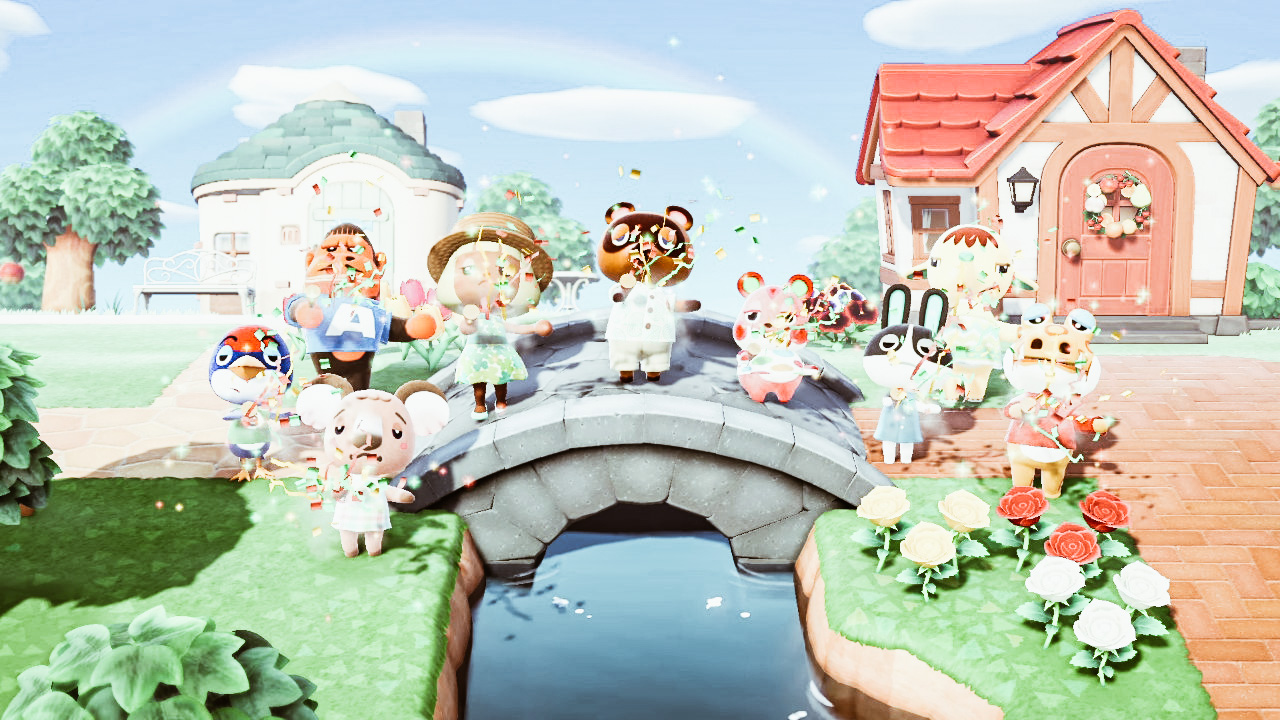
photo credits: gamereactor.it
Le varie versioni
Il titolo giapponese どうぶつの森 (Doubutsu no Mori) letteralmente significa “Foresta degli Animali” ed è stato sviluppato per Nintendo dal game designer Hisashi Nogami nel lontano 2001 trasformandosi velocemente in uno dei videogiochi più amati di sempre. Alla sua prima uscita, infatti, si sono susseguite varie edizioni come Animal Crossing: Wild World, Animal Crossing: Let's Go to the City, Animal Crossing: New Leaf e il recentissimo Animal Crossing: New Horizons; oltre ai simpatici spin-off come Animal Crossing: Happy Home Designer e Animal Crossing Pocket Camp, quest’ultimo disponibile per Android e iOS.
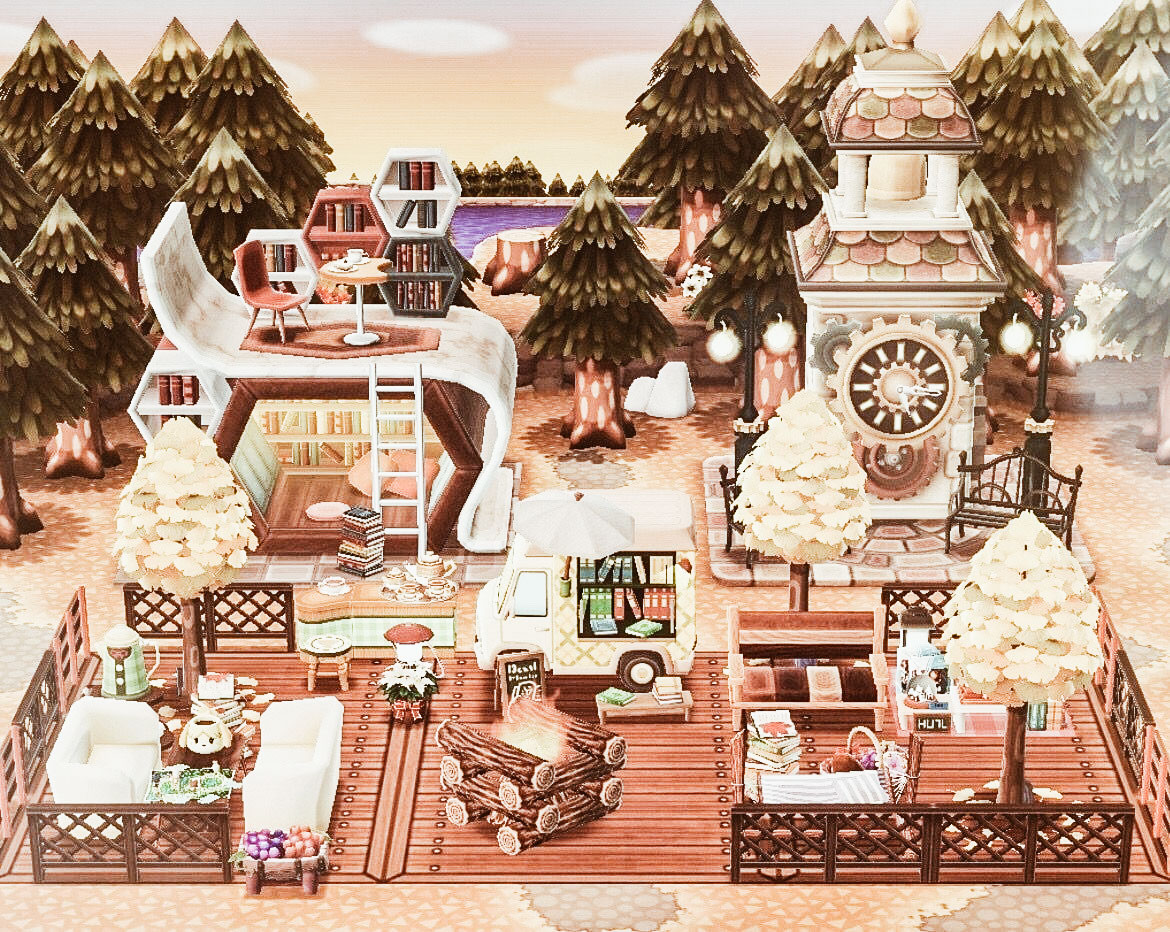
photo credits: pinimg.com
Simulatore di vita, questo gioco ci catapulta in un mondo abitato da curiosi animaletti antropomorfi con i quali si può interagire. Non esiste un vero obiettivo, il punto forza della serie è quello di personalizzare il proprio villaggio, raccogliere oggetti, esplorare e… rilassarsi. Inoltre il tempo scorre esattamente come quello della nostra realtà. Il giorno e la notte, le stagioni, le festività, si alternano seguendo i ritmi della nostra quotidianità.
L’ultima edizione del gioco, "New Horizons", è ambientato in un’isola deserta. Totalmente personalizzabile grazie alla funzionalità del Terra Forming che permette di lasciare andare la propria fantasia e ricreare ambienti dalle più disparate ispirazione.

photo credits: twitter.com/ryuryu_12mj
Una volta creato il proprio stile, arredato l’arredabile, invitato amici a visitare l’isola ecc ecc cosa resta da fare? C’è chi potrebbe dire che la giocabilità si esaurisce, ma non è così. Infatti, eventi e aggiornamenti rendono New Horizons un videogioco interminabile e affascinante in cui si possono festeggiare matrimoni, compleanni e cerimonie di vario tipo. Creare un party con gli amici, celebrare le festività come Natale, Pasqua, Tanabata, partecipare a festival di vario genere, gare ed eventi a sorpresa! Ancora una volta, il Giappone ci ha regalato qualcosa di unico. Una gioco a cui dedicarci quando il mondo attorno a noi risulta soffocante e frenetico o semplicemente quando vogliamo evadere, ma non lo possiamo fare fisicamente.
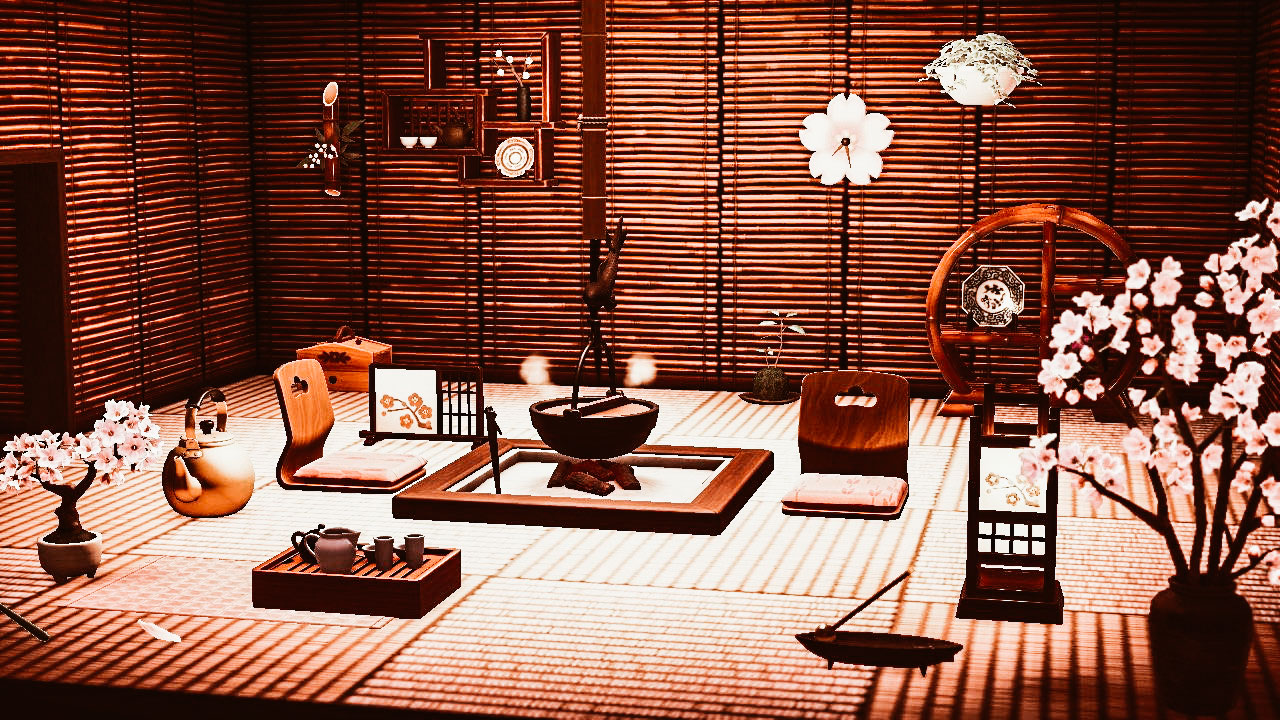
photo credits: twitter.com/opeope1006
Tutti i titoli della serie sono disponibili sul sito ufficiale NINTENDO.
Amuleti e Lucky charm, direttamente dal giappone
Il Giappone ha delle tradizioni ricche e varie, una delle più famose è quella legata ai lucky charm, ovvero gli amuleti portafortuna. Infatti, gli o-mamori (お守り) sono facili da trovare e basta andare in un qualsiasi tempio per acquistarli. Ma che cosa sono esattamente e come sono fatti?
O-mamori (お守り), amuleti porta fortuna e lucky charm
scritto da: Sara | fonte: Tokyo Weekender
Lucky charm per eccellenza, questi amuleti infondono protezione proprio perchè 守り (mamori) significa protezione/guida. Infatti, una preghiera di buon auspicio scritta su carta o legno viene poi avvolta da una raffinata stoffa di seta. Fatti di diversi colori in base alla tipologia a cui sono destinati, questi lucky charm rappresentano amore, salute, fortuna, denaro, apprendimento ecc.
La loro efficacia è destinata ad esaurirsi dopo un anno o al raggiungimento dello scopo che hanno. Infatti, al termine bisognerebbe portarli dove sono stati acquistati affinchè vengano bruciati in un fuoco sacro.
La storia degli O-mamori
La loro storia ha radici religiose shintoiste e buddiste. Infatti, i sacerdoti pensavano di poter proteggere le persone allontanando gli spiriti maligni grazie a piccole benedizioni tascabili. Qui dentro venivano infatti racchiuse la forza e la protezione degli dei.
Col tempo gli omamori si sono moltiplicati, ne esistono di svariate fattezze e si possono acquistare nei santuari e nei tempi sparsi su tutto il territorio nipponico.
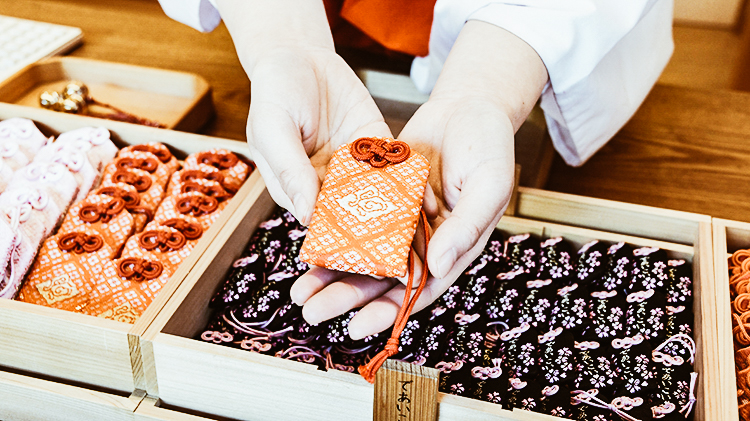
photo credits: web-japan.org
Omamori tradizionali: una protezione per ogni esigenza
KATSUMORI 勝守, il successo
La preghiera di questo omamori garantirà che quell’unico obiettivo che vi siete posti e a cui state dedicando le vostre energie si realizzi.
YAKUYOKE 厄除け, allontanare il male
Spesso il raggiungimento di un obiettivo può essere difficile o addirittura ostacolato, perciò questo amuleto aiuterà a prevenire i potenziali demoni che potrebbero inibire il successo.
SHOUBAI-HANJOU 商売繁盛, soldi
Solitamente di colore giallo accesso e a forma di “sacchetto”, questo omamori può essere più generico e quindi garantire la fortuna monetaria oppure più specifico come proteggere gli investimenti, i risparmi o i buoni affari.
GAKUGYOU-JOUJU 学業成就, istruzione e apprendimento
Incoraggiante e motivazionale negli studi questo omamori è molto popolare tra gli studenti e si possono vedere appesi ai loro zaini come portafortuna per la carriera scolastica.
KOUTSU-ANZEN 交通安全, un viaggio sicuro
Viaggiare sicuri è uno dei desideri di tutti e questo amuleto è diventato il più amato e diffuso anche tra coloro che guidano i mezzi pubblici (bus, taxi e aerei). La sua funzione è quella di rendere più sicure le strade e proteggere autisti e passeggeri da disattenzioni stradali e aerospaziali. Infatti, esiste la versione proprio dedicata agli aerei che prende il nome di KOKU-ANZEN.
EN-MUSUBI 縁結び, l’amore
C’è poco da spiegare, che siate single, fidanzati, sposati oppure state per avere un bambino, questi omamori hanno un’unica funzione. Infatti, il loro scopo è di garantire e rafforzare l’amore, dare la felicità, semplificare le cose, proteggere il cuore.
KAIUN 開運, Fortuna
Un omamori generale, quello della fortuna, che non detta delle linee guida o dei vincoli. Si tratta semplicemente di un rafforzatore della fortuna, un lucky charm per qualunque scelta od occasione.
SHIAWASE 幸せ, la felicità
Sulla scia di KAIUN, anche SHIAWASE è un “garante per la felicità”. Infatti questo diventa un motivatore a migliorare la propria vita ricordando le piccole sfumature che possono cambiare tutti i punti di vista.
KENKO 健康, la salute
Questo talismano, come è facile intuire, ha lo scopo di proteggere dalle malattie, mantenere in salute il corpo e aiutare chi lo possiede a vivere una lunga vita.
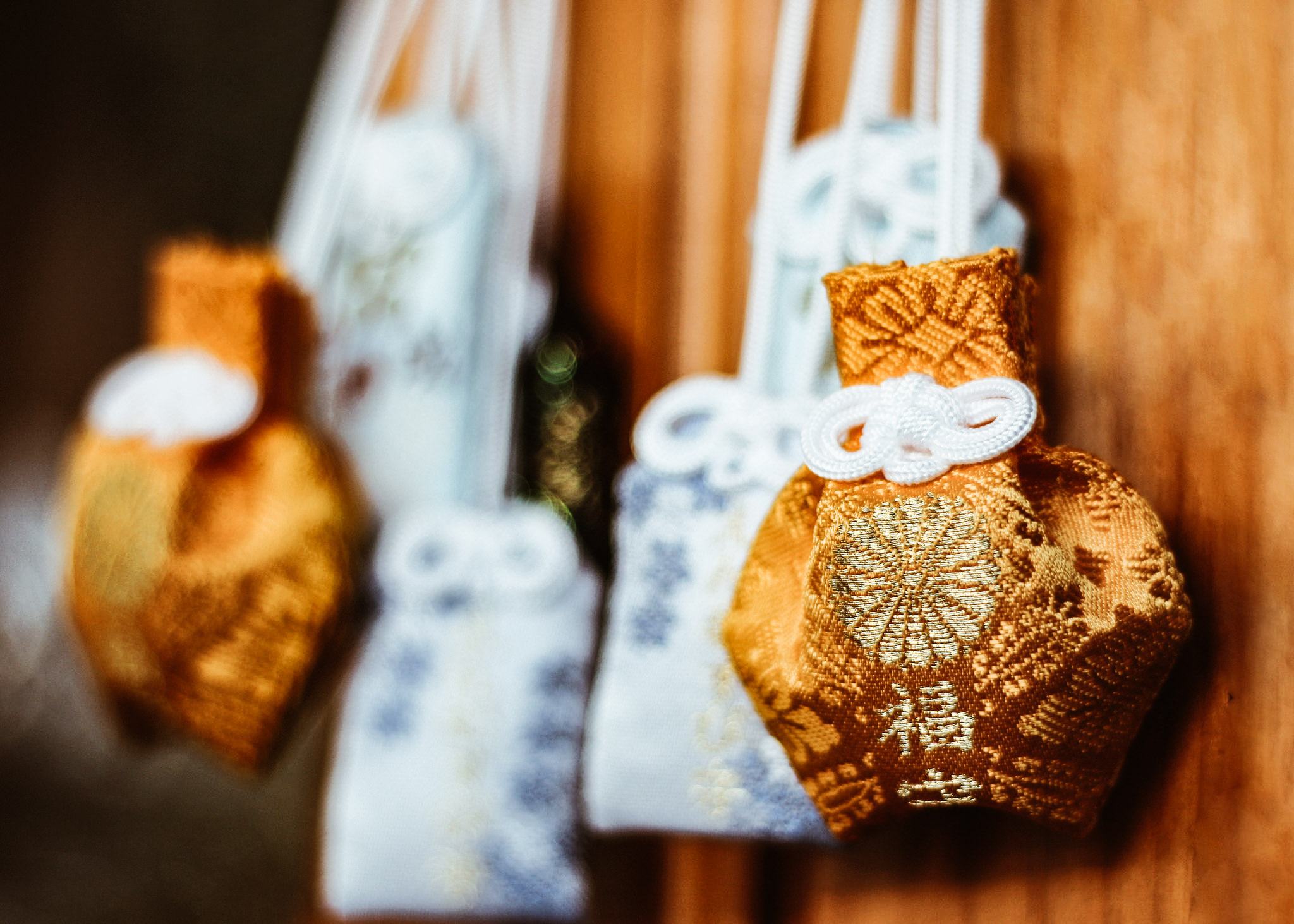
photo credits: Fiona Dawkins
Omamori particolari: talvolta bisogna colpire nel segno
DA BUGIA A VERITA
Questo omamori è molto diverso da quelli a cui siamo abituati. Infatti è interamente di legno intagliato e ha la forma di un uccellino. Lo si può trovare solamente una volta l’anno, il 25 gennaio al Santuario di Yushima e il suo scopo è quello di trasformare tutte le bugie in un canto di verità.
LA BELLEZZA “ETERNA”
Esiste l'omamori generico rivolto alla bellezza complessiva. Tuttavia, ci sono anche omamori specifici per avere belle gambe, oppure anti-invecchiamento o ancora per avere una vita più snella, occhi bellissimi, pelle migliore e molto altro.
ANIMALI DOMESTICI
Non è così difficile trovare amuleti protettivi per gli animali! Anche loro meritano una benedizione speciale, non è così?
TECNOLOGIA
Potrebbe farci sorridere al pensiero di un amuleto che possa proteggere contro le insidie di internet o le difficoltà nell’utilizzare i dispositivi elettronici, eppure esiste!
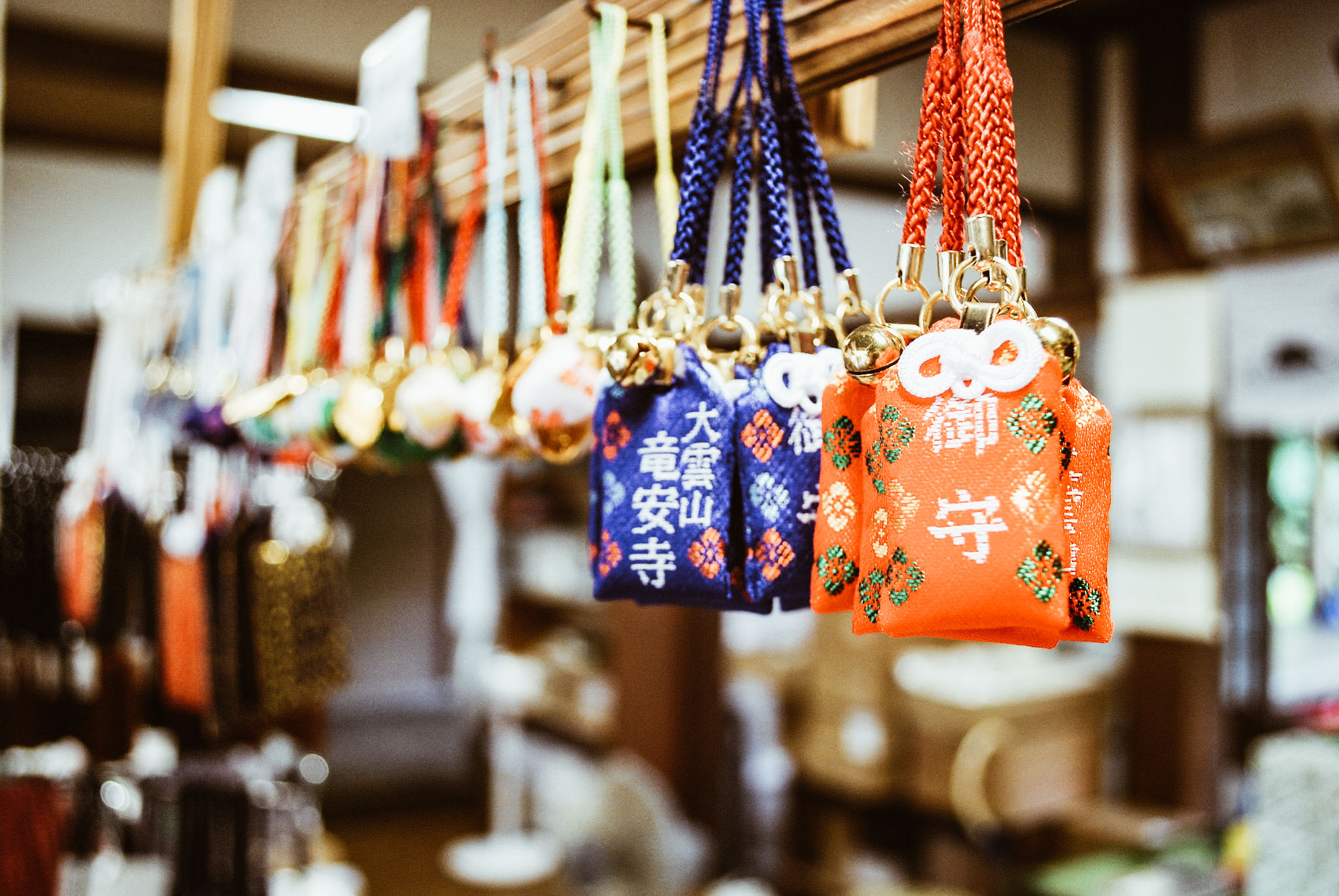
photo credits: Ryuko Studio Mexico
Potremmo affermare che esiste un lucky charm per ciascuno di noi, combinazioni uniche che probabilmente non cambieranno la nostra esistenza. Tuttavia, sono un modo carino per augurare il bene di chi amiamo o semplicemente adornare i nostri oggetti e mezzi con qualcosa che ci ricordi i nostri obiettivi.
Cose da fare in quarantena: Visitare virtualmente i musei del Giappone
Visitare ogni museo del Giappone, si può ma virtualmente
scritto da: Sara | fonte: Tokyo Weekender
La fase due qui in Italia è cominciata ma viaggiare è ancora impossibile, quindi continuiamo la nostra rubrica sulle cose da fare in quarantena e oggi vi parliamo di come visitare i musei del Giappone, virtualmente.
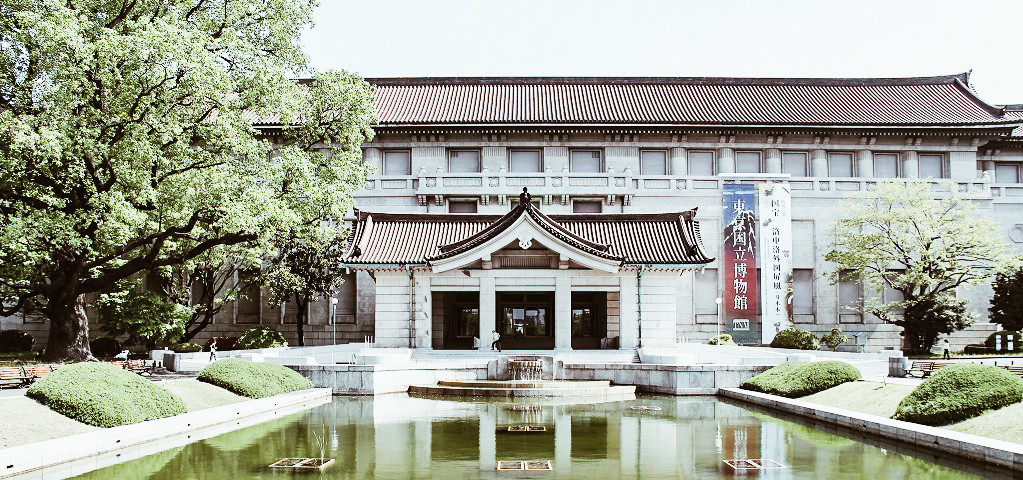
photo credits: https://enjoy.vivi.city/
In un attimo siamo stati travolti da un nemico invisibile che ha inevitabilmente stravolto le vite di tutti, in tutto il mondo. La diffusione del nuovo coronavirus e la pandemia che ne è seguita ha purtroppo portato alla chiusura di moltissimi settori economici, ma anche luoghi di interesse culturale.
Le situazioni sono le più svariate e noi di Japan Italy Bridge vogliamo cercare di non condividere tristezze, ma di concedere delle piccole parentesi di svago a tutti i nostri lettori. Infatti, nonostante il COVID-19 abbia profondamente colpito tutti, la nostra missione resta quella di portarvi in viaggio con noi tra le meraviglie del Sol Levante.
Abbracciando lo slogan #stayathome, l’hashtag che si è diffuso in questi mesi, e grazie a Google Art And Culture e ad altre iniziative individuali, anche il Giappone ha aperto le porte virtuali dei suoi meravigliosi musei e mostre, consentendoci di visitarli comodamente dal salotto di casa nostra! L’elenco è davvero lunghissimo, ma noi abbiamo selezionato i nostri preferiti. Cosa ne dite quindi di distrarci un po’ e iniziare questo itinerario virtuale? Tra Arte, moda, ceramica e storia: che il viaggio abbia inizio!
Chihiro Art Museum
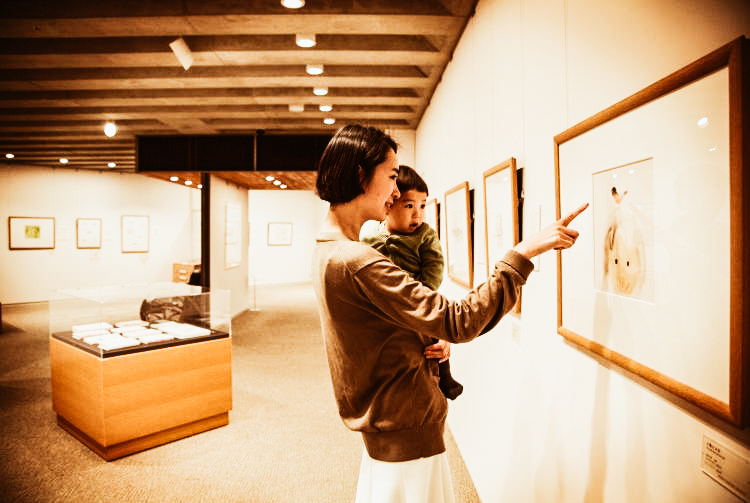
photo credits: gotokyo.org
Il Chihiro Art Museum di Tokyo fu istituito nel 1977 in onore dell'artista Chihiro Iwasaki (1918-1974), famoso per le sue delicate illustrazione color pastello per bambini. Oggi questo museo accoglie anche mostre che esibiscono opere di altri illustratori da tutto il mondo.
Fukuoka Art Museum
Aperto nel 1979, il Fukuoka Art Museum offre una collezione di 16.000 opere: utensili da tè, arte buddista, dipinti non solo locali ma anche famosi quadri di Dalì, Mirò e Chagall.
Fukuoka City Museum
L'arte asiatica assume un fascino e un'originalità che nessun altro museo al mondo riuscirà mai ad offrire. Infatti, al Fukuoka City Museum troviamo opere di artisti che "superano" lo standard per dare vita ad un' Asia "contemporanea".
Il museo della Keio University Library
L'università di Keio è sempre stata una delle più importanti del Giappone e la sua biblioteca include collezioni di inestimabile valore, come la Bibbia di Gutenberg, ukiyo-e e oltre 10.000 rare edizioni costituite da manoscritti e lettere scritte da personaggi di spicco della storia.
Kyoto National Museum
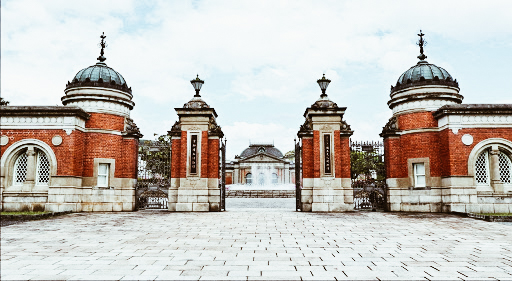
photo credits: intk-token.it
Il Kyoto National Museum fu aperto nel 1897 con il nome di Museo Imperiale di Kyoto. Nel 2014, il museo ha aperto una nuova ala, l'Heisei Chishinkan, per ospitare mostre delle sue vaste collezioni, che comprendono oltre 12.500 opere d'arte tradizionale giapponese.
Tokyo National Museum
Il Tokyo National Museum espone una vasta collezione di opere d'arte e antichità dal Giappone dalle antiche ceramiche alle stampe del periodo Edo e opere provenienti da altri paesi asiatici.
The Kyoto Costume Institute
La moda giapponese ha sempre influenzato il mondo e il Kyoto Costume Institute (KCI) raccoglie e conserva sistematicamente esempi eccezionali di abbigliamento occidentale attraverso secoli.
Nagasaki Atomic Bomb Museum
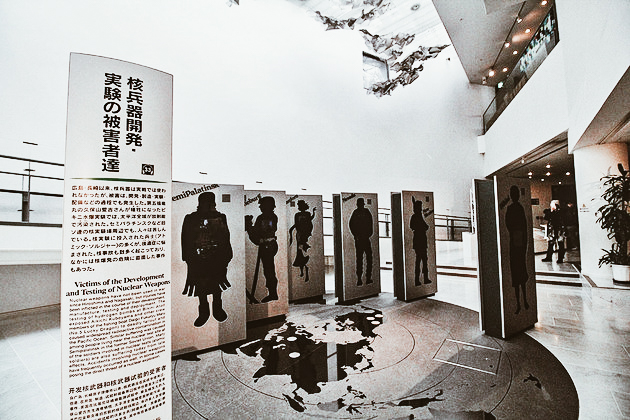
photo credits: shoreexcursions.asia
C'è davvero poco da raccontare per il Nagasaki Atomic Bomb Museum. Questo museo è stato istituito per non dimenticare ciò che accadde quel 9 agosto 1945, alle 11:02 quando tutti gli orologi si fermarono, visitarlo è tremendamente emozionante.
The Museum of Oriental Ceramics, Osaka
Fondato nel novembre 1982, il Museum of Oriental Ceramics, Osaka comprende circa mille pezzi di cinese e ceramiche coreane oltre ad opere della collezione Rhee Byung-Chang e opere firmate da Hamada Shoji.
Sagawa Art Museum
Inaugurato nel marzo 1998, il Sagawa Art Museum offre al pubblico le opera di artisti giapponesicome Ikuo Hirayama, Churyo Sato e Raku Kichizaemon XV
Museum of the Sakitama Ancient Burial Mounds
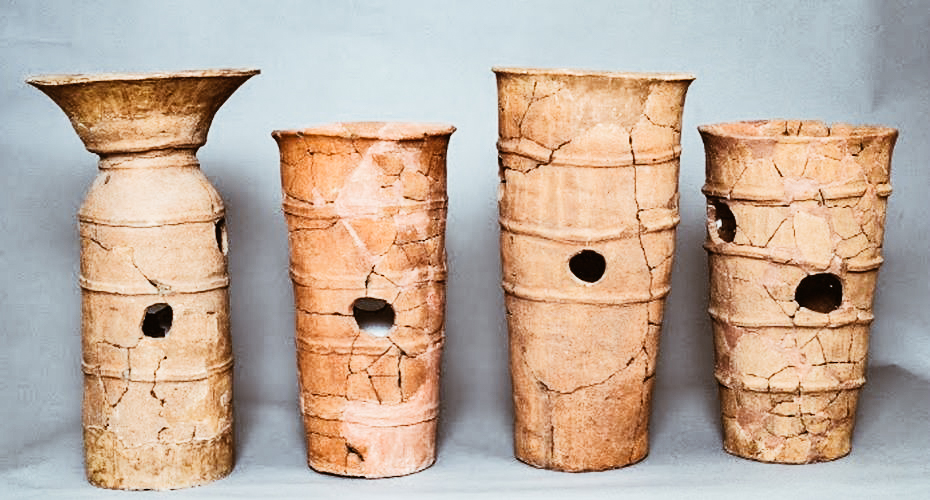
photo credits: smarthistory.org
Nel Museum of Sakitama Ancient Burial Mounds troviamo una raccolta di manufatti, divenuti poi tesori nazionali. Infatti, nelle stanze di questo musoe vediamo risorse estremamente preziose nel comprendere l'antica storia del Giappone.
Se pensate che non sia ancora abbastanza e sentite il desiderio di camminare virtualmente per le città del Giappone, oggi è possibile! Infatti Visitare i palazzi e le vie del Sol Levante diventa facile grazie a Google Street View. Qui milioni di immagini panoramiche assolutamente mozzafiato che vi faranno sognare e vi trasporteranno oltre qualunque confine geografico!
Travel guide: Tokyo - Episode 06 - gli Shinkansen del futuro
Tokyo – Osaka in un’ora con gli Shinkansen del futuro
scritto da: Sara | fonte: TimeOut Tokyo
Continuiamo con le nostre guide pratiche di Tokyo e oggi parliamo del sistema ferroviario giapponese, uno dei più efficienti al mondo, e del gioiello di questo sistema: gli shinkansen.
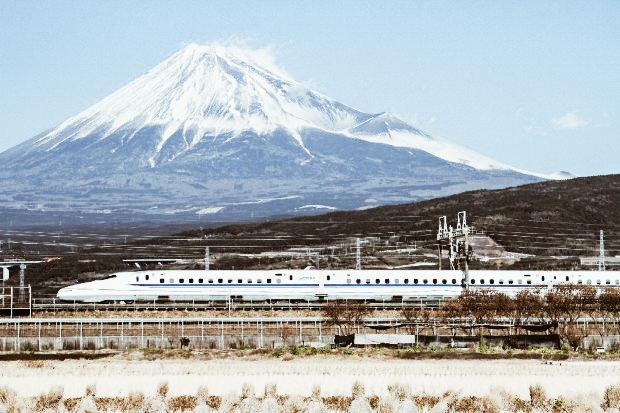
photo credits: repubblica.it
Parte integrante e caratteristica delle infrastrutture giapponesi, gli shinkansen (新幹線) sono quei treni definiti “proiettili”. Essi viaggiano velocissimi fino a raggiungere i 320 km/h, per portarci da una città all’altra in pochissimo tempo.
Le linee dello Shinkansen
Attualmente le linee conosciute che ci permettono di viaggiare verso diverse destinazioni in Giappone sono 15. Da Tokyo verso sud abbiamo la linea Tokaido Shinkansen, che collega la capitale con Osaka. La linea Sanyo Shinkansen collega Osaka a Fukuoka, mentre la linea Kyushu Shinkansen da Fukuoka attraversa l’isola di Kyushu da nord a sud. Da Tokyo partono anche le linee Shinkansen Akita, Hokkaido, Hokuriku, Joetsu, Tōhoku e Yamagata.
La sfida del Sol Levante è sempre costante: offrire sicurezza e massima efficienza.
Nel 2015, Japan Railways Group (JR) è riuscita a battere il record mondiale di velocità ferroviaria con il treno a levitazione magnetica che ha raggiunto il 603 km/h. Da qui si è via via sviluppato un programma che potremmo definire futuristico per mantenere questo impressionante record. Parliamo infatti della tratta Tokyo-Nagoya-Osaka. Questa nuova iniziativa prende il nome di Linear Project e dovrebbe essere completata nel 2037.
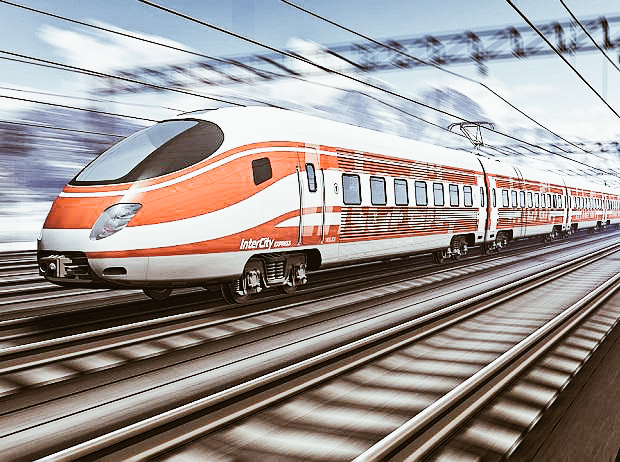
photo credits: business-standard.com
I treni del futuro
La Japan Railways da sempre si impegna nell’implementazione di treni ultra moderni. Infatti, ora si sta concentrando sulla realizzazione di una Shinkansen lineare capace di viaggiare a levitazione magnetica. Questo tipo di tecnologia avrebbe ruote retrattili che non toccano i binari facendo si che il treno possa elegantemente “scivolare” senza alcun attrito. Questo shinkansen del futuro viaggerebbe ad una velocità massima di 500 km/h, portandoci da Tokyo a Nagoya in 40 minuti e da Tokyo ad Osaka in 67 minuti.

photo credits: agatetravel.com
Naturalmente questo progetto richiede nuove infrastrutture che permetta un collegamento da Tokyo a Nagoya per la maggior parte sotterraneo. Infatti, questo permetterebbe di evitare zone soggette a forti scosse di terremoto. Con costi che si aggirerebbero attorno ai 50 miliardi e mezzo, la prima parte della rotta potrebbe essere già completata nel 2027. Insomma, non ci resta che attendere e seguire gli sviluppi.
Voi cosa ne pensate del viaggiare ad alta velocità? Questi treni così futuristici ormai sono parte della nostra realtà e lo shinkansen ha un fascino incredibile: avete avuto modo di provarlo? Raccontateci le vostre esperienze!









